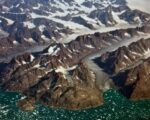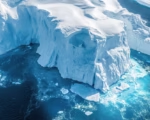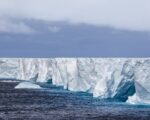Ancient Ice Age Landforms Discovered Beneath the North Sea
Scientists have uncovered massive buried landforms beneath the North Sea, revealing evidence of an enormous ice sheet that existed around 1 million years ago. Using high-resolution imaging, researchers identified large-scale geological structures formed during the mid-Pleistocene transition (MPT)—a critical period in Earth’s glacial history. The ice sheet, which once stretched from present-day Norway to the British Isles, left behind distinct landforms before retreating, providing new insights into the evolution of past glaciers and their impact on climate change.
High-Resolution Imaging Unveils Ancient Ice Structures
A study published in Science Advances detailed how researchers used sound wave technology to map these hidden landforms buried beneath over 1 kilometer of sediment. Christine Batchelor, a senior lecturer in physical geography at Newcastle University, explained in an interview with Live Science that the findings challenge previous theories suggesting the presence of multiple smaller ice sheets in the region. Instead, the data indicates that a single, expansive ice sheet covered vast areas of northern Europe, reshaping the seafloor as it advanced and retreated.
Patterns of Ice Sheet Movement
As glaciers move, they carve distinct erosional and depositional landforms in the underlying sediment. The research team identified elongated, streamlined features aligned with the ice flow direction, indicating how the glacier expanded across the seabed. Additionally, transverse ridges—including crevasse-squeeze ridges—formed when soft sediment was forced into ice fractures during the glacier’s retreat. These features suggest that meltwater played a key role in destabilizing the ice sheet, ultimately leading to its collapse.
Unlocking Climate Clues from the Past
The discovery of these ancient ice-age landforms offers crucial insights into glacial behavior during periods of major climate shifts. By analyzing these structures, scientists can better understand how ice sheets responded to warming and cooling cycles in the past, which in turn helps predict future ice sheet changes in response to modern climate change. As researchers continue to explore these buried landscapes, further discoveries could reshape our understanding of Earth’s glacial history and sea level fluctuations.


















